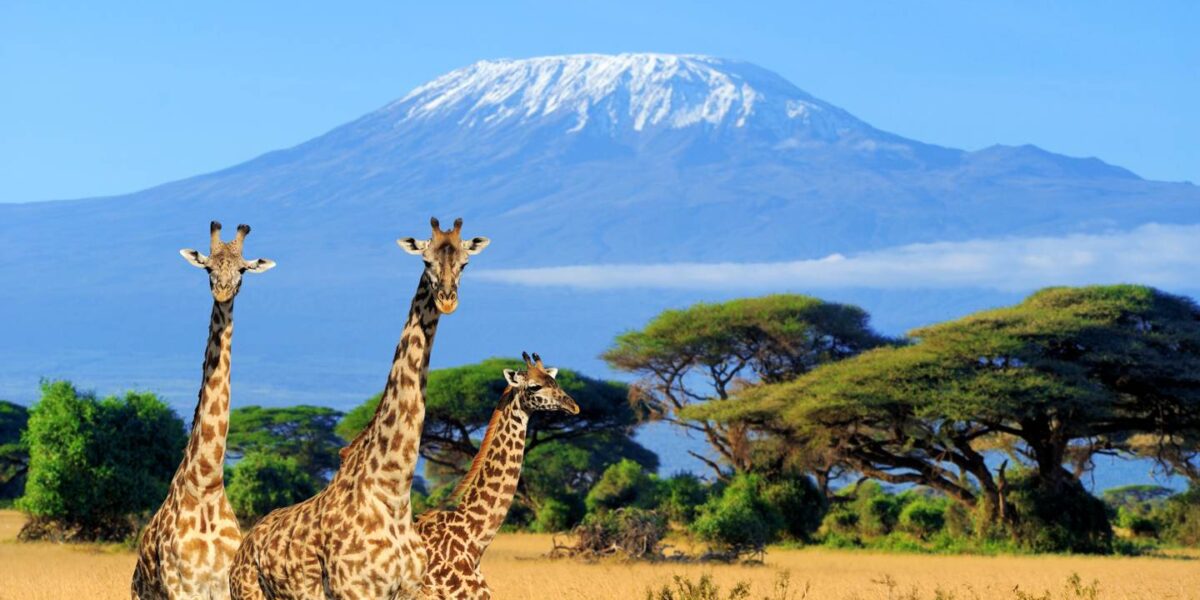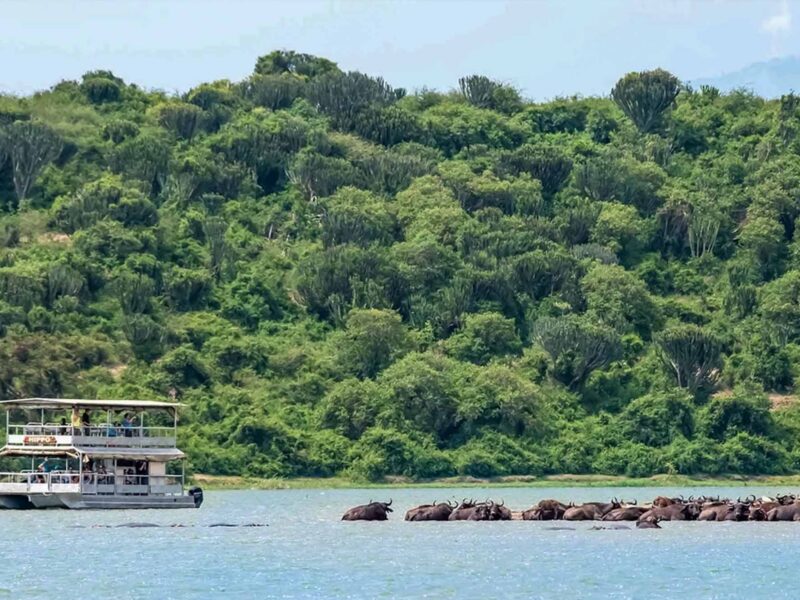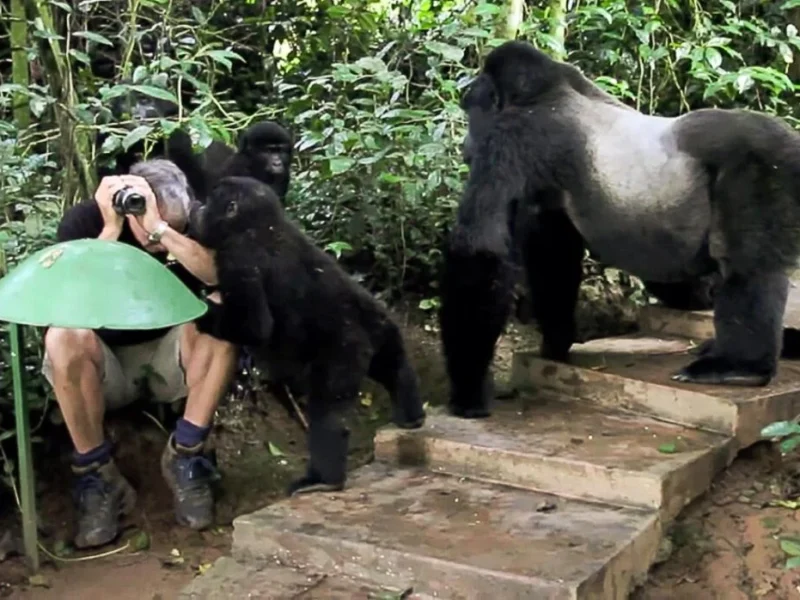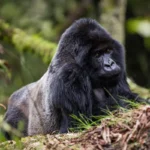
Uganda Gorilla Trekking from the Philippines and Flights
September 24, 2025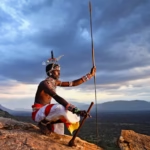
Cultural Tourism in Kenya: Beyond the Safari
September 25, 2025Kenya: The Heart of East African Tourism
Located in East Africa, Kenya is a country of striking contrasts. From the sunny beaches of the Indian Ocean to the snow-capped peaks of Mount Kenya, and from arid deserts to lush savannahs filled with wildlife, Kenya offers one of the most varied travel experiences in Africa.
It is renowned for its world-class safaris, diverse landscapes, and rich cultural heritage, with over 40 ethnic groups contributing to its vibrant identity. Visitors can explore wildlife reserves, discover traditional villages, or relax on the coast, all within one country.
Kenya’s unique blend of nature, wildlife, and culture makes it a top destination for travelers seeking adventure, beauty, and authentic experiences.
A Glimpse into Kenya
Kenya’s capital, Nairobi, is one of Africa’s most dynamic cities, blending modern urban culture with close proximity to nature. The country is home to over 40 ethnic groups, each with its own language, traditions, and cuisine, making it a cultural mosaic. English and Swahili are the official languages, and Kenya boasts a growing economy, driven largely by agriculture, services, and tourism.
Tourism is a vital pillar of Kenya’s economy and a key contributor to its international reputation. Each year, the country attracts millions of visitors from around the world, drawn by its unmatched natural beauty, abundant wildlife, and cultural diversity. The sector supports hundreds of thousands of jobs, generates significant foreign exchange, and plays a crucial role in community development and conservation efforts.
Kenya’s appeal lies in its wide variety of experiences. For wildlife enthusiasts, it offers some of the best safaris on the continent, with iconic parks like the Maasai Mara and Amboseli. For history lovers, the country’s ancient coastal towns, colonial-era landmarks, and archaeological sites tell rich stories of African heritage and global influence. Beachgoers can unwind on pristine white-sand shores along the Indian Ocean, while adventure seekers can hike mountains, explore deep gorges, or dive in vibrant coral reefs.
No matter your interests, Kenya promises a unique and unforgettable journey, where every destination offers something new to discover.
Top Tourist Attractions in Kenya
1. The Maasai Mara National Reserve: Kenya’s Premier Safari Destination
Widely regarded as Kenya’s most iconic game reserve, the Maasai Mara stands at the heart of Africa’s wildlife tourism. It is world-famous for the Great Migration, an awe-inspiring natural phenomenon where over two million wildebeests, zebras, and gazelles cross the Mara River from Tanzania’s Serengeti into Kenya between July and October. This perilous journey, filled with dramatic river crossings and predator encounters, is often called “the greatest wildlife show on Earth.”
But the Maasai Mara offers much more than just the migration. The reserve boasts one of the highest concentrations of wildlife in Africa, and is home to the legendary “Big Five” lion, elephant, buffalo, leopard, and rhinoceros making it a top destination for year-round game viewing. Visitors can witness predators in action, spot rare species, and enjoy close encounters with nature in its most raw and untouched form.
In addition to traditional game drives, tourists can experience the Mara from a new perspective through hot air balloon safaris at sunrise, offering panoramic views of the endless savannah and roaming herds below. Many also choose to visit nearby Maasai villages, where they can engage with the local Maasai people, learning about their customs, dances, dress, and way of life that has remained largely unchanged for centuries.
With its stunning landscapes, rich biodiversity, and deep cultural connections, the Maasai Mara is not just a safari destination it’s a once-in-a-lifetime experience.
2. Amboseli National Park
Amboseli National Park: Majestic Views and Elephant Paradise
Nestled at the base of Mount Kilimanjaro, the tallest mountain in Africa, Amboseli National Park is one of Kenya’s most iconic and picturesque safari destinations. Known for its stunning, postcard-perfect views of the mountain’s snow-capped peak towering above the horizon, Amboseli offers a dramatic and unforgettable backdrop for wildlife viewing and photography.
The park is especially renowned for its large herds of free-roaming African elephants, some of the most studied and well-protected in the world. Visitors often encounter these gentle giants up close, sometimes walking in single file across the dusty plains with Kilimanjaro rising behind them an image that has come to symbolize East African safaris.
Amboseli’s landscape is defined by open savannahs, seasonal wetlands, swamps, and acacia woodlands, creating a rich and varied habitat that supports a wide range of wildlife. In addition to elephants, the park is home to lions, cheetahs, hyenas, giraffes, buffaloes, zebras, wildebeests, and over 400 species of birds, making it a haven for both animal lovers and birdwatchers.
The flat, open terrain provides excellent visibility, making game drives highly rewarding and ideal for photography, especially at sunrise and sunset when the light bathes the land in golden tones. The park also offers opportunities for guided nature walks and cultural visits to Maasai communities, where travelers can learn about traditional customs, dances, and pastoral life.
With its unmatched views, abundant wildlife, and strong conservation efforts, Amboseli National Park remains a must-visit destination for anyone seeking the true spirit of the African wilderness.
3. Lake Nakuru National Park
Lake Nakuru, located in Kenya’s Great Rift Valley, is a shallow, alkaline (soda) lake renowned for its spectacular gatherings of pink flamingos that often blanket its shores in a sea of color. These iconic birds are drawn to the lake’s abundance of algae, which thrive in the alkaline waters, creating a natural feeding ground.
Beyond the flamingos, Lake Nakuru National Park serves as a critical sanctuary for both black and white rhinoceroses, offering a safe haven for these endangered species amidst increasing threats from poaching. The park’s dedicated conservation efforts have made it a model for wildlife protection in the region.
The rich biodiversity doesn’t stop there Lake Nakuru is home to over 400 bird species, including pelicans, cormorants, and the African fish eagle, making it a paradise for bird watchers. Photographers, too, are drawn to the dramatic landscapes, diverse wildlife, and the vivid contrast of pink birds against the blue lake and acacia-dotted plains.
Whether you’re a conservation enthusiast, a nature lover, or simply seeking an unforgettable safari experience, Lake Nakuru offers a unique blend of ecological significance and natural beauty.
4. Mount Kenya National Park
Mount Kenya, rising to an impressive 5,199 meters (17,057 feet), is the second-highest mountain in Africa, surpassed only by Mount Kilimanjaro. A designated UNESCO World Heritage Site, this ancient, extinct volcano is both a geological marvel and a cultural icon, revered by local communities such as the Kikuyu people, who regard it as a sacred dwelling place of their god, Ngai.
The mountain’s dramatic snow-capped peaks Batian, Nelion, and Lenana offer a breathtaking contrast to the surrounding equatorial landscape. These peaks, sculpted by glacial activity, attract trekkers, climbers, and adventure seekers from around the world, offering routes that range from moderate hikes to technical ascents.
Encircling the peaks is Mount Kenya National Park, a biodiversity hotspot characterized by lush montane forests, bamboo thickets, and rare Afro-alpine moorlands. The park is home to several endangered and endemic species, including the elusive mountain bongo antelope, giant forest hogs, elephants, and a wide variety of birdlife. The flora is equally unique, featuring giant lobelias, senecios, and other plant species specially adapted to high-altitude environments.
Whether you’re a seasoned mountaineer or a nature lover seeking serenity in the wilderness, Mount Kenya offers a rare combination of adventure, natural beauty, and ecological significance. Its pristine environment and rich wildlife make it not just a climbing destination, but a place of discovery, reflection, and deep connection to Africa’s natural heritage.
5. Tsavo National Parks (East and West)
Together, Tsavo East and Tsavo West National Parks form one of the largest protected wildlife areas in the world, covering over 22,000 square kilometers (8,500 square miles) in southeastern Kenya. This vast wilderness is a cornerstone of Kenya’s conservation efforts and offers an authentic safari experience, far from the more heavily trafficked tourist circuits.
Tsavo East, the larger and more open of the two, is famous for its “red elephants” majestic herds that appear coated in a reddish hue after dust-bathing in the park’s distinctive iron-rich soil. The park’s wide, open plains are also home to lions, giraffes, buffalo, leopards, and a variety of antelope species. The Galana River, one of the park’s main lifelines, snakes through the arid landscape and attracts a diverse array of wildlife, particularly during the dry season.
Tsavo West, by contrast, is more rugged and dramatic, characterized by volcanic hills, lava flows, and lush springs that emerge like oases in the wilderness. One of its highlights is Mzima Springs, a series of crystal-clear pools fed by underground streams from Mount Kilimanjaro, where visitors can observe hippos and crocodiles from an underwater viewing chamber. The park also offers breathtaking views of Mount Kilimanjaro on clear days, adding to the dramatic scenery.
Despite its sheer size and ecological richness, Tsavo remains less crowded than parks like the Maasai Mara or Amboseli, making it ideal for those seeking a more secluded and immersive wildlife experience. The sense of scale and solitude here is unmatched—perfect for adventurous travelers, photographers, and anyone looking to connect deeply with the raw beauty of the African wilderness.
6. Nairobi National Park
Nairobi National Park is one of the world’s most unique wildlife reserves a remarkable wilderness just 7 kilometers (about 4 miles) from the heart of Kenya’s bustling capital city. Nowhere else can you witness iconic African wildlife roaming freely with the modern skyline of Nairobi rising in the background a striking juxtaposition of nature and urban life.
Despite its proximity to skyscrapers and traffic, the park boasts a rich diversity of wildlife, including lions, giraffes, zebras, buffaloes, cheetahs, and endangered black rhinos. Open grass plains, acacia-dotted landscapes, and seasonal wetlands provide vital habitat for over 400 bird species and a wide array of mammals, making it a must-visit destination for both locals and international visitors.
One of the park’s standout features is the David Sheldrick Wildlife Trust, located at its edge. This renowned sanctuary rescues and rehabilitates orphaned baby elephants—many of whom have lost their mothers to poaching or human-wildlife conflict. Visitors can observe these young elephants during their daily mud baths and feeding sessions, learning about the complex and compassionate work involved in their care before they are eventually released back into the wild.
Whether you’re in Nairobi for a few days or just passing through, **Nairobi National Park offers an unforgettable and accessible safari experience a powerful reminder of Kenya’s commitment to conservation, even in the heart of its capital.
7. Lamu Island
Off the northern coast of Kenya lies Lamu, a beautifully preserved Swahili town and UNESCO World Heritage Site that offers a window into centuries of history, culture, and tradition. Founded in the 14th century, Lamu is one of the oldest and best-preserved Swahili settlements in East Africa, reflecting a rich blend of African, Arab, Indian, and European influences that shaped the region through trade, religion, and migration.
The town’s charm lies in its labyrinth of narrow, winding alleyways, where intricately carved wooden doors, coral stone buildings, and shaded verandas whisper stories of a bygone era. There are no cars in Lamu’s Old Town the pace of life is slow and serene. Instead, donkeys remain the primary means of transport on land, while dhows, the traditional wooden sailing boats, glide across the Indian Ocean, ferrying people and goods just as they have for centuries.
Lamu is not just a place, but an experience a living museum of Swahili culture. Visitors can explore historic mosques, bustling markets, and tranquil courtyards, or attend the Lamu Cultural Festival, where traditional poetry, music, dhow races, and Swahili cuisine bring the island’s heritage to life.
Whether you’re wandering the quiet lanes at sunrise, sailing through mangrove channels at sunset, or simply enjoying a cup of spiced Swahili tea by the water, Lamu offers a timeless escape from the modern world a place where history, hospitality, and harmony with nature come together in perfect balance.
8. Diani Beach
Located south of Mombasa, Diani Beach is one of Africa’s most beautiful coastal destinations. White sandy beaches, turquoise waters, coral reefs, and a range of water sports make it perfect for relaxation or adventure. Nearby, tourists can explore Shimba Hills National Reserve or go snorkeling at Kisite-Mpunguti Marine Park.
9. Hell’s Gate National Park
Hell’s Gate National Park, located just a short drive from Lake Naivasha in Kenya’s Rift Valley, stands out from most wildlife parks for one major reason—it allows visitors to explore on foot or by bicycle, offering a truly immersive and adventurous experience in the wild. Without the confines of a safari vehicle, guests can get up close to the park’s dramatic terrain, which includes towering cliffs, deep gorges, rugged rock towers, and active geothermal vents that hiss and steam from the earth.
The park’s otherworldly landscapes have long captured the imagination of visitors and artists alike most notably, they served as the inspiration for the setting of Disney’s The Lion King. With its striking rock formations like Fischer’s Tower and Central Tower, Hell’s Gate feels like a scene straight from an epic film.
While the park is not home to big predators, it still offers the chance to encounter zebras, giraffes, gazelles, buffaloes, and a wide variety of birds, including rare vultures and Verreaux’s eagles. This makes it ideal for travelers seeking a safe but thrilling outdoor adventure, especially those who enjoy hiking, rock climbing, and cycling in untamed, cinematic surroundings.
For the truly curious, the park also features hot springs, natural geysers, and geothermal power stations, underscoring its unique geological significance. Nearby attractions include the Ol Njorowa Gorge, a dramatic canyon carved by water and time, where guided hikes reveal hidden caves, waterfalls, and steaming fissures.
Whether you’re a nature lover, a thrill-seeker, or a fan of The Lion King, Hell’s Gate offers an unforgettable, hands-on encounter with Kenya’s wild beauty, unlike any other park in the country.
10. Great Rift Valley
Kenya’s portion of the Great Rift Valley is one of the most visually stunning and geologically significant regions in Africa. Stretching from the north to the south of the country, this vast valley is characterized by dramatic escarpments, volcanic mountains, fertile plains, and a series of sparkling crater lakes that offer spectacular views and unique ecological habitats.
Among its most famous lakes are Lake Naivasha and Lake Baringo. Lake Naivasha, a freshwater lake surrounded by acacia forests, is popular for its tranquil boat rides, vibrant birdlife, and sightings of hippos along its shores. Lake Baringo, slightly more remote, is a haven for birdwatchers, hosting over 470 bird species, including fish eagles, herons, and flamingos. These lakes, along with others like Lake Bogoria, known for its geothermal springs and flamingo flocks, form a crucial part of Kenya’s Rift Valley lake system, which is recognized as a UNESCO World Heritage Site.
Beyond its natural beauty, the Great Rift Valley is also rich in culture and heritage. The region is home to several indigenous communities, including the Elgeyo and the Kalenjin, who are known not only for their traditions but also for producing some of the world’s most elite long-distance runners. Visitors have the opportunity to engage with these communities, learn about their ways of life, and experience their deep connection to the land.
The Rift Valley is also a growing center for eco-tourism, attracting travelers who seek sustainable adventures and off-the-beaten-path experiences. Hiking, rock climbing, bird watching, and cultural tours are popular activities, especially in scenic locations like Mount Longonot, Hell’s Gate National Park, and the Kerio Valley. The region’s geological wonders, including prehistoric sites like Olorgesailie, offer insight into the origins of humanity, making it both a natural and anthropological treasure.
In every sense, the Great Rift Valley is a place where nature, history, and culture converge, offering visitors an unforgettable journey through one of Kenya’s most captivating landscapes.
Cultural Tourism in Kenya
Beyond its world-famous wildlife and breathtaking landscapes, Kenya is a country rich in cultural heritage and human history, offering travelers a chance to connect deeply with its diverse ethnic communities and time-honored traditions.
A visit to Maasai, Samburu, Turkana, or Kikuyu villages opens a fascinating window into traditional ways of life that have been preserved over generations. These communities offer immersive experiences where visitors can learn about indigenous knowledge systems, pastoral lifestyles, unique architectural styles, and time honored customs from beadwork and dress to storytelling, song, and oral history. Many of these villages welcome respectful tourism, allowing guests to engage with local people through guided tours, homestays, or cultural demonstrations.
Beyond the villages, Kenya’s vibrant local markets are a sensory feast—alive with color, aroma, and energy. Markets such as Maasai Market in Nairobi or the Kisumu City Market offer a chance to browse handcrafted jewelry, textiles, carvings, and fresh local produce while interacting with artisans and traders.
Throughout the year, cultural festivals across the country bring Kenya’s ethnic mosaic to life. Events like the Lake Turkana Cultural Festival, Lamu Cultural Festival, and Maralal Camel Derby celebrate the diverse traditions, music, cuisine, and dances of Kenya’s more than 40 ethnic groups. These gatherings are not only lively and entertaining but also serve to preserve and showcase the country’s rich heritage.
Whether you’re watching a Maasai warrior perform the adumu (jumping dance), tasting traditional ugali and nyama choma, or listening to ancient stories under a starlit sky, Kenya offers far more than just a safari it offers a deep, personal connection to the cultures that have shaped this land for centuries.
Sustainable and Community Tourism
Kenya has made strides in eco-tourism and community-based tourism, where locals benefit directly from tourism revenue. Many lodges and tour operators support wildlife conservation, reforestation, and local education initiatives. Travelers are encouraged to choose sustainable options that protect Kenya’s natural and cultural heritage.
Kenya is more than just a safari destination it’s a land of adventure, culture, beauty, and resilience. Whether you’re tracking lions on the savannah, hiking through misty mountain forests, or relaxing on an Indian Ocean beach, Kenya will leave you inspired and yearning to return.
So, pack your bags and get ready to explore the magical land of Kenya where the wild heart of Africa beats strongest.

